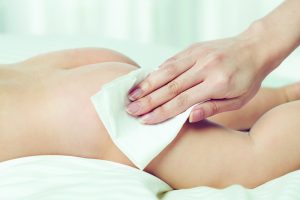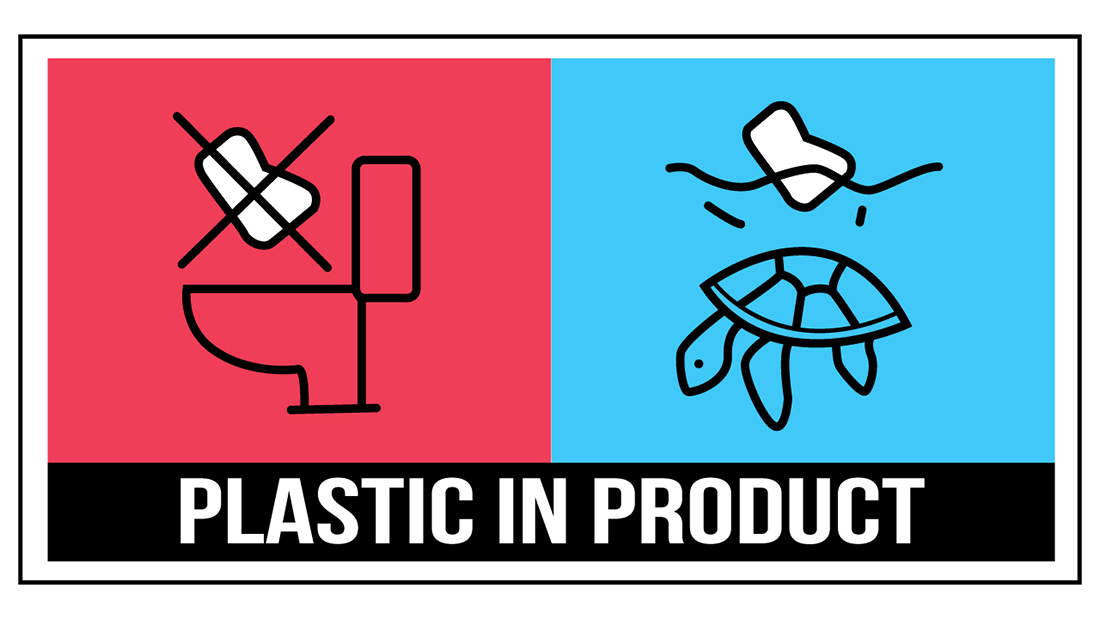Viscose fibers are no longer classified as “plastic” under the European Commission’s long-awaited guidelines on single-use plastic products, which were finally published on May 31 after several months of delay.
Earlier drafts of the Single-Use Plastics Directive (SUPD), which aims to combat environmental problems caused by single-use plastic products, had categorized some regenerated cellulosic fibers such as viscose as plastic, although lyocell had escaped this definition. It is now recognized that these fibers are natural polymers that have “not been chemically modified.”
Nonwovens manufacturers had been concerned that the use of biodegradable and renewable wood-based cellulose, such as viscose and lyocell, would come under the directive when used in single-use wet wipes and absorbent hygiene products, which are cited as major contributors to microplastic pollution of the marine environment.
Other single-use plastic products that fall under the SUPD, such as wet wipes and sanitary items, will have to carry prominent warning labels on the packaging or product itself, with extended producer responsibility for their clean-up, collection and disposal coming into place for some items from December 31, 2024.
From July 3, laws will come into force in all European Union countries that ban certain single-use plastic products for which affordable plastic-free alternatives exist on the market, including cotton bud sticks, cutlery, plates, straws, stirrers, and balloon sticks, as well as cups, food and beverage containers made of expanded polystyrene and all products made of oxo-degradable plastic.
Other single-use plastic products that fall under the SUPD, such as wet wipes and sanitary items, will have to carry prominent warning labels on the packaging or product itself, with extended producer responsibility for their clean-up, collection and disposal coming into place for some items from December 31, 2024.
Under the directive, which was adopted in 2019, plastics are polymers that function as a main structural component of end products – except for polymers that have not been chemically modified. This definition also includes bio-based and biodegradable plastics, which represents a setback for the burgeoning biopolymers sector. (NOTE: For more on this story, see “New SUPD guidance calls biopolymers ‘plastic’; yet PHA, PLA stakeholders remain optimistic for the long term“)
Cellulose acetate is also regarded as a chemically modified polymer because the chemical modifications of the polymer occurring during production remain present at the end of the process – the chemical structure of the outgoing polymer is different to that of the incoming polymer.
Regenerated cellulosic fibers such as viscose and lyocell were originally classified as “not plastic” in the draft SUPD guideline of September 2020. However, a later draft, published in December 2020, included a new interpretation of the SUPD, which many in the fiber industry said was not technically justified.
Several European trade associations and fiber producers lobbied against the later definition, arguing that viscose fibers biodegrade just as well as cotton and support a move to more sustainable raw materials for products such as wipes and sanitary products.

EDANA, the European association of the nonwovens and related industries, had argued that viscose and lyocell have the same chemical structure as cellulose and are not chemically modified and therefore should not be considered as plastic materials.
The publication of the SUPD guidelines comes as a reprieve for viscose producers and the nonwovens industry in general, which is already under pressure to develop more sustainable products to help reduce plastic waste.
There had also been concerns that if regenerated cellulose fibers had been classified as plastic, at least for single-use products, this definition could be extended to regions outside Europe.
“The primary problem of plastics in the environment is really a littering problem of convenience items and packaging being discarded where they should not be, and those items being very persistent in the environment as they do not break down,” said Dave Rousse, president of INDA, the North American nonwovens industry association. “Putting the littering element aside, addressing the persistence problem is a materials science challenge. As such, we should be encouraging solutions that deliver the performance we need, such as responsible end-of-life options like biodegradability or composability or recyclability.”
Matthew North, commercial director at Germany-based Kelheim Fibres, said: “Plastic waste, particularly marine pollution, is one of the biggest environmental challenges of our time, threatening not only the habitat of numerous animals but ultimately the health of humans. Microplastics have long since entered our food chain and we still know very little about the consequences.

“We welcome the efforts of the European Commission to reduce [the use of] single-use plastic products and the publication of the SUPD guidelines. [This] finally brings clarity for our customers and for the whole supply chain – and it allows consumers to make a better-informed purchasing decision.
“The publication of the SUPD guidelines is a milestone that will accelerate the development of more sustainable alternatives. Our viscose specialty fibers, for example, enable the production of sustainable wet wipes and absorbent hygiene products with no sacrifice in performance and are a biodegradable alternative to fossil-based materials in a broad range of applications.
“We are particularly pleased that the guidelines reflect sound scientific principles and existing European legislation categorizing viscose not as plastic. Viscose fibers are not the problem – they can be part of the solution; a stepping stone on the path from a fossil-based to a bio-based future.”
Austria-based cellulosic fibers producer Lenzing also welcomed the European Commission’s clarity in the publication of the guidelines in the fight against plastic waste and the uniform labeling obligation for wipes and feminine hygiene products containing plastics in the transition to closed-loop models.
Robert van de Kerkhof, member of the managing board of Lenzing Group, said: “Lenzing has been investing in the development of sustainable and innovative solutions for the textile and nonwovens industry for many years and will also continue in the future to intensively work on achieving systemic change towards a circular economy.”
Jürgen Eizinger, vice president global nonwovens business, added: “The issue of hygiene is becoming increasingly important and is especially the order of the day in the light of the prevailing pandemic conditions. The Single-Use Plastics Directive enables consumers to make a more informed purchase decision. We welcome these implementation guidelines which now provide enhanced clarity.”
According to a 2018 report by Smithers, around 500,000 tonnes of petroleum-based fibers are used globally each year to produce wipes. However, new market dynamics could now emerge once the labelling rules for single-use plastic products takes effect.
A Marketagent online survey carried out in German-speaking regions of Europe in October 2019 concluded that nine out of ten consumers of wipes would immediately change their purchasing behavior if they found out that their current product contains plastic.
However, Eunomia Research & Consulting had argued that the exemptions for natural polymers could undermine the European legislation’s aim to reduce the environmental impact of single-use products.
In a report published in January 2020, the Bristol, UK-based environmental consultancy claimed the substitution of natural polymers for plastic to avoid falling under the SUPD regulations could increase environmental harm.
The study focused on viscose and lyocell fibers – natural polymers that make effective substitutes for synthetic polymers – used in non-flushable wet wipes, which are often flushed down the toilet, causing blockages in sewage systems and releasing fibrous material into the environment.
The report pointed out that current standards and frameworks “cannot provide confidence that [natural polymer] materials that pass into the marine environment will not have a similarly detrimental impact as a synthetic plastic product,” adding that there is “no justification on environmental grounds for an exemption for lyocell or viscose under the SUPD.”
Eunomia reasoned that increased use of natural polymers in wet wipes could be driven by their exemption from the Directive’s regulations and consumers’ desires to avoid plastic and choose “environmentally benign” alternatives. It said this could lead to increased consumption and flushing of non-flushable wet wipes made from these materials as consumers believe they will have a minimal impact on the environment.
* International Fiber Journal is owned by INDA, Association of the Nonwoven Fabrics Industry (inda.org).


